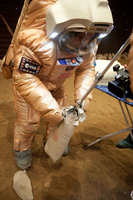Wednesday, June 13. 2012
-----
by Lizzie Wade
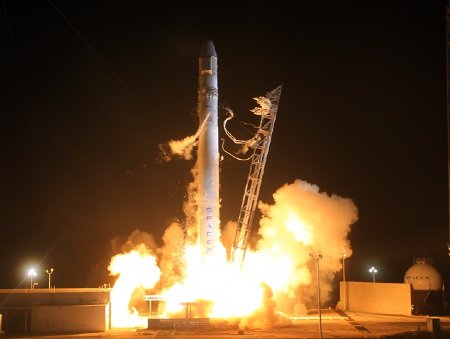
The New York Times may have reported that Elon Musk is prepared to send people to Mars “with or without NASA,” but the CEO of Space Exploration Technologies Corporation—better known as SpaceX—was singing a different tune on Tuesday after his company launched its Dragon spacecraft into low Earth orbit and began guiding it towards the International Space Station.
(...)
Note: read more about it on GOOD, published before the mission, the nature of the collaboration between SpaceX and NASA is detailed and provides a more nuanced view about the "public" vs "private" discussion here.
Following my previous post about Arctic drones that reminded me of a project we did in 2010, Arctic Opening (pdf), this one makes me think of another one, also dating back from 2010, I-Weather as Deep Space Public Lighting (pdf). What seems interesting to me here is that the debate about the nature of space gets further away, into space (or even deep space). Until now, all manned missions to Space were public, so the (deep) space in a way, was also a public space (at the exeption of some communication satellites, paid seats by some "tycoons", etc.). So to say, we are now not only confronted to the changing nature of our "ground space" where public space decreases, but also of the space that surrounds Earth, the "Space's space", that will also become franchised, bit by bit.
Public space (public technology, fundings, etc.) is undoubtly an important sub-subject that runs through our works. Public space of Space too. Or should we consider it now an old debate? That in fact, public space, linked to the invention of the democratic state (Athenes) is an old concept, probably a too static one (and therefore the binary opposition between public and private as well) or worse: a lost battle? Should we try to migrate the idea and re-invent it, linked to new ways of organizing societies (public-participative-evolutive-creolized-space)? Many questions...
Wednesday, April 11. 2012
Via MIT Technology Review
-----
The chip achieves unprecedented accuracy by processing information from many different sensors.
By Christopher Mims
Broadcom has just rolled out a chip for smart phones that promises to indicate location ultra-precisely, possibly within a few centimeters, vertically and horizontally, indoors and out.
The unprecedented accuracy of the Broadcom 4752 chip results from the sheer breadth of sensors from which it can process information. It can receive signals from global navigation satellites, cell-phone towers, and Wi-Fi hot spots, and also input from gyroscopes, accelerometers, step counters, and altimeters.
The variety of location data available to mobile-device makers means that in our increasingly radio-frequency-dense world, location services will continue to become more refined.
In theory, the new chip can even determine what floor of a building you're on, thanks to its ability to integrate information from the atmospheric pressure sensor on many models of Android phones. The company calls abilities like this "ubiquitous navigation," and the idea is that it will enable a new kind of e-commerce predicated on the fact that shopkeepers will know the moment you walk by their front door, or when you are looking at a particular product, and can offer you coupons at that instant.
The integration of new kinds of location data opens up the possibility of navigating indoors, where GPS signals are weak or nonexistent.
Broadcom is already the largest provider of GPS chips to smart-phone makers. Its new integrated circuit relies on sensors that aren't present in every new smart phone, so it won't perform the same in all devices. The new chip, like a number of existing ones, has the ability to triangulate using Wi-Fi hot spots. Broadcom maintains a database of these hot spots for client use, but it says most of its clients maintain their own.
A company that pioneered the construction and maintenance of these kinds of Wi-Fi hot spot databases is SkyHook Wireless. Skyhook CEO Ted Morgan is skeptical that Broadcom can catch up to his company's software-based system allowing for precise indoor location. "Broadcom is just now talking about something we have been doing for seven to eight years, uncovering all the challenges," says Morgan. These include battery management and cataloging a new wave of mobile Wi-Fi hot spots. "Broadcom has never done major deployment," adds Morgan.
Scott Pomerantz, vice president of the GPS division at Broadcom, counters that "the big [mobile] operating systems all have a strategy in place" to create their own Wi-Fi databases. Pomerantz isn't allowed to name names, but one of Broadcom's biggest customers is Apple, which previously used Skyhook for location services in its iPhone but now employs its own, Apple-built location system.
At least one feature of Broadcom's new GPS chip is entirely forward-looking, and integrates data from a source that is not yet commercially deployed: Bluetooth beacons. (Bluetooth is the wireless standard used for short-range communications in devices like wireless keyboards and phone headsets.)
"The use case [for Bluetooth beacons] might be malls," says Pomerantz. "It would be a good investment for a mall to put up a deployment—perhaps put them up every 100 yards, and then unlock the ability for people walking around mall to get very precise couponing information."
"The density of these sensors will give you even finer location," says Charlie Abraham, vice president of engineering at Broadcom. "It could show you where the bananas are within a store—even on which shelf there's a specific brand."
Copyright Technology Review 2012.
Thursday, March 22. 2012
-----
de Liv Siddall
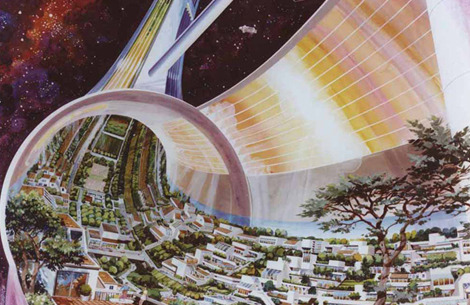
Ever sat at work daydreaming about living in space? Then you’ll be pleased to know that NASA has enormous teams working on space-habitation. In the likely case of us having to flee our planet, we’ll hopefully be able to whizz up to these pods where there are barbecues, golf, parks and suspension bridges waiting for us (Phew! Thank god they’ve got suspension bridges up there, I’d definitely miss those). Check out these insanely cool (though sadly rejected) designs for space houses from the 1970s and remember – these are not just musings, they are real designs, made by real NASA. (Read more)
www.settlement.arc.nasa.gov
Friday, April 29. 2011
Pictures taken out from the BLDGBLOG post about Nicholas Monchaux's recent book: Spacesuit: Fashioning Apollo.
-----
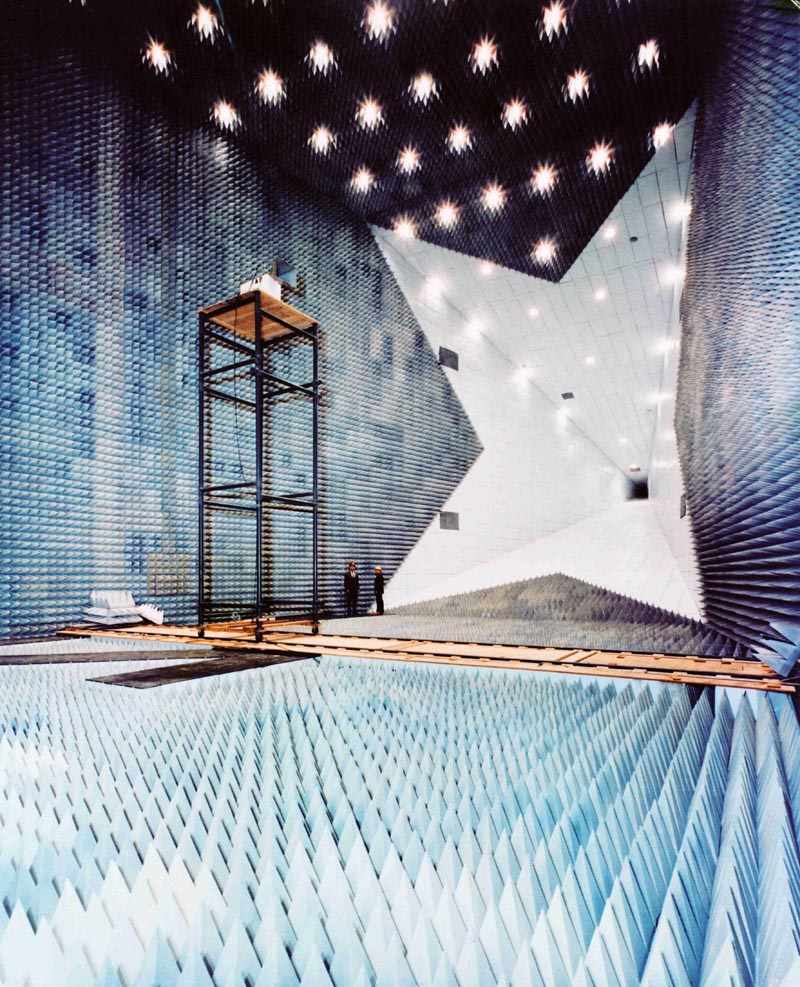
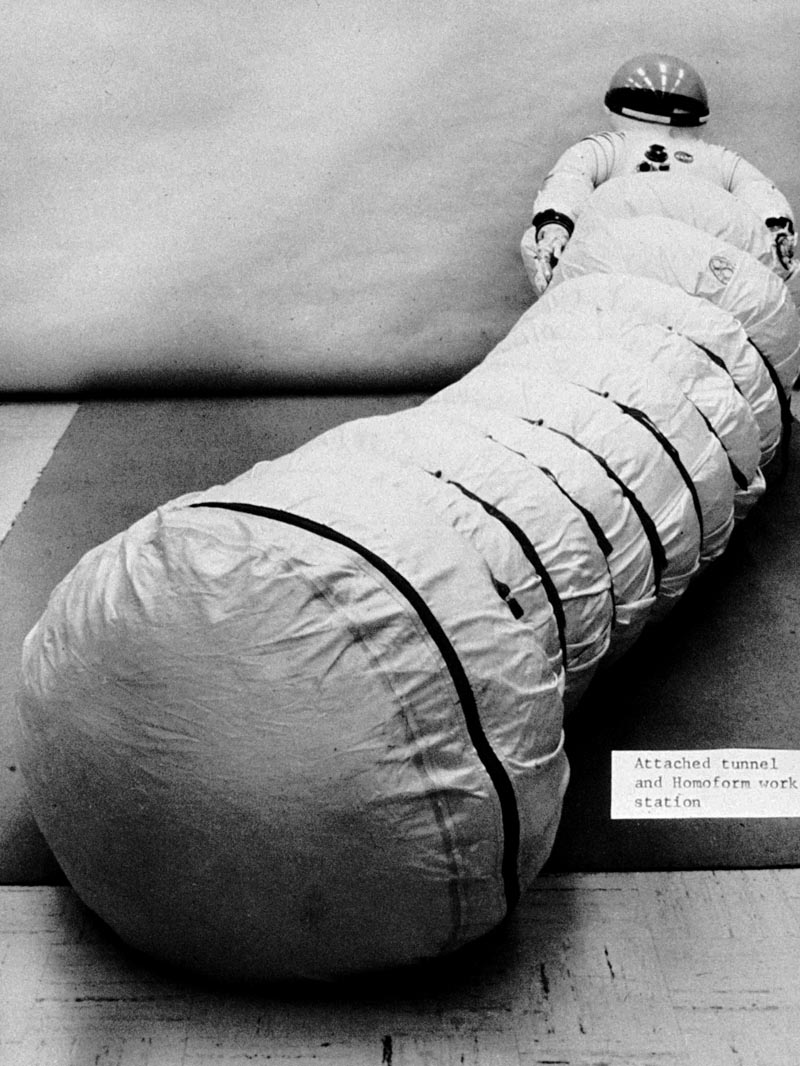
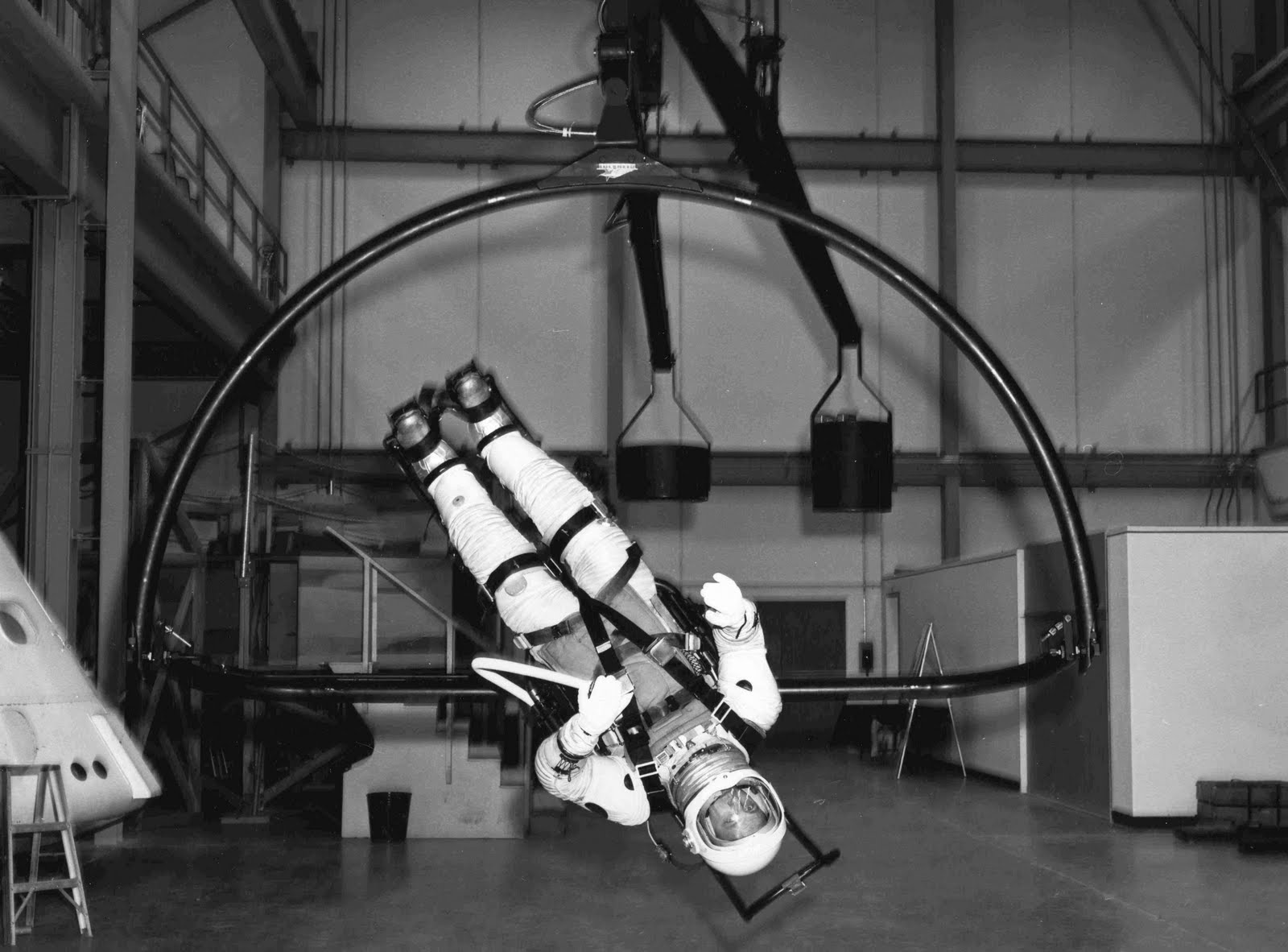

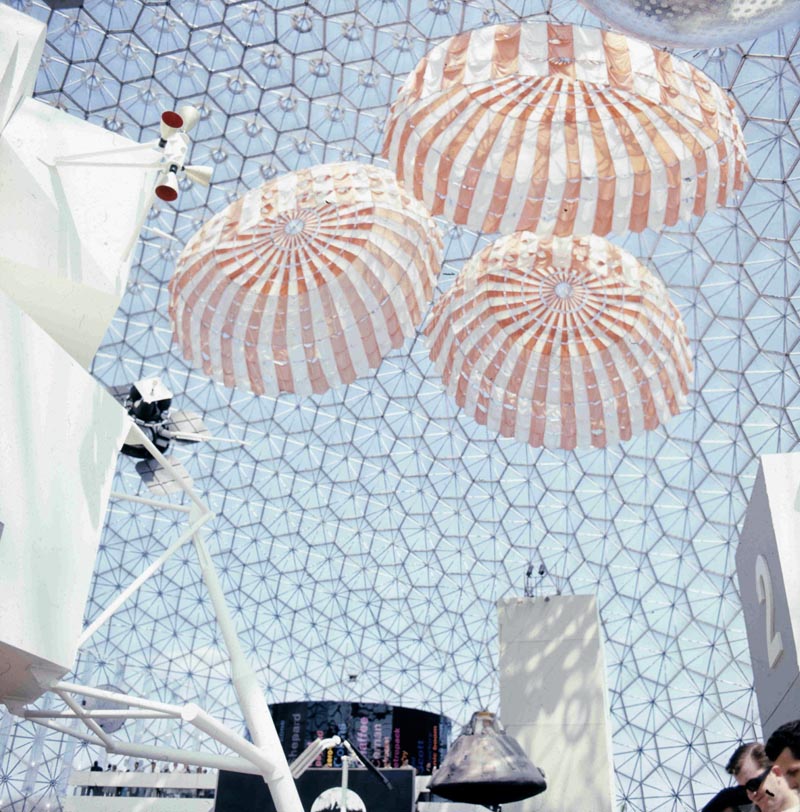
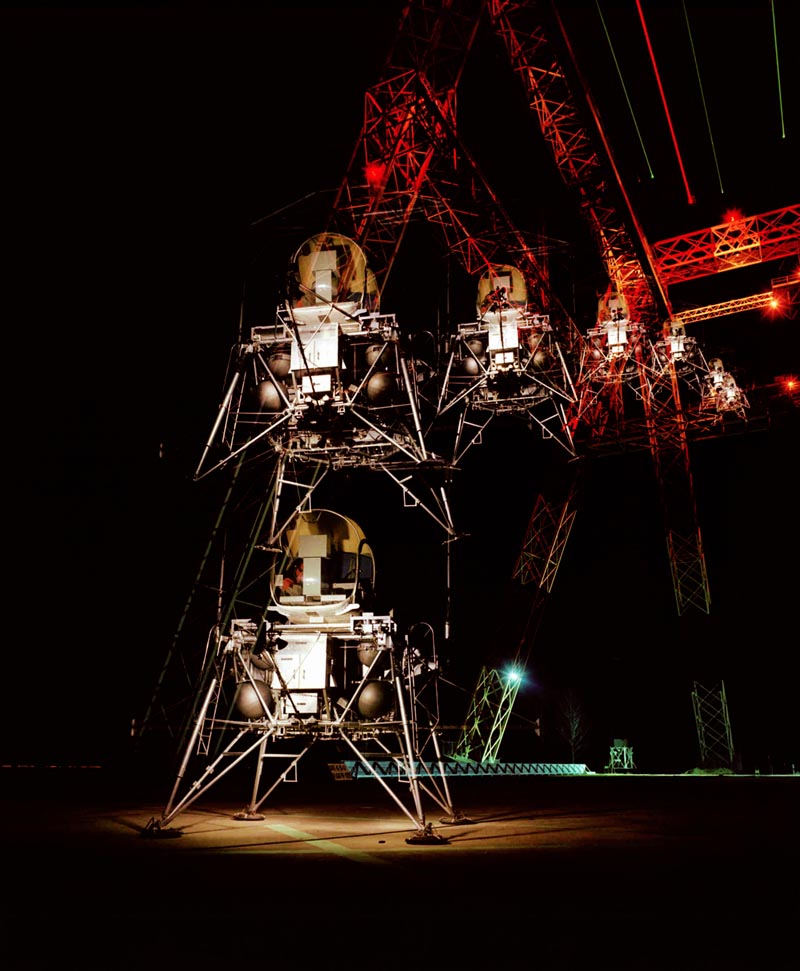
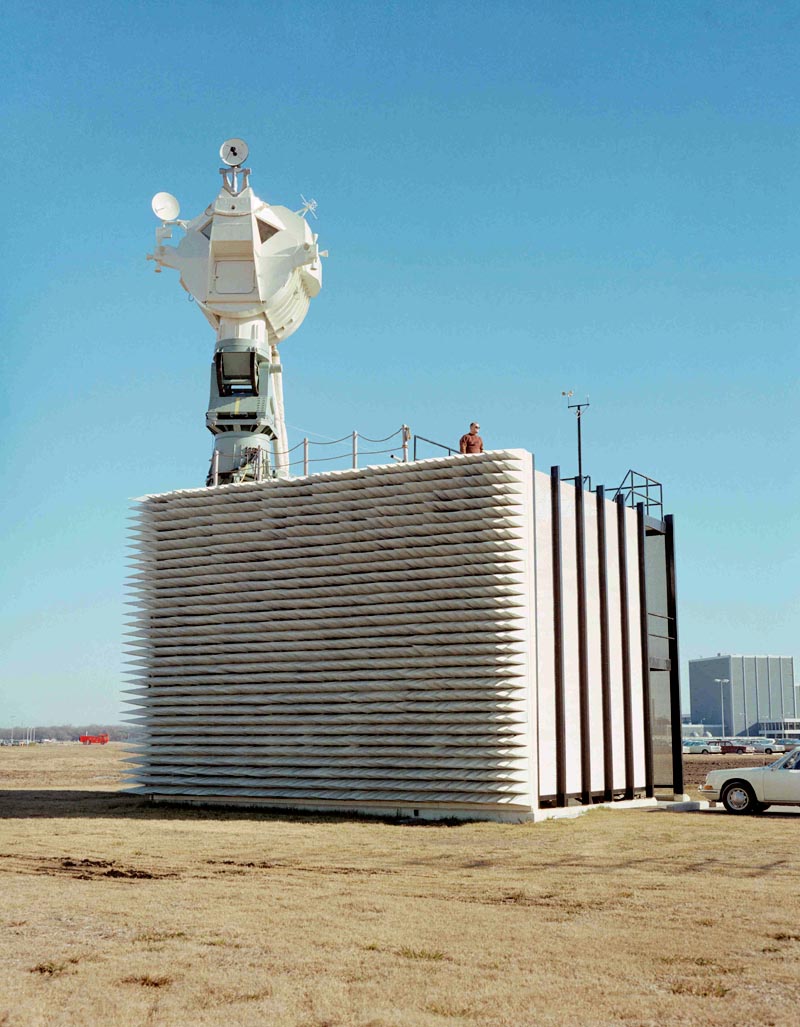

[Images: From Spacesuit: Fashioning Apollo by Nicholas de Monchaux].
Friday, April 01. 2011
Via Art-Agendawww.art-agenda.com/
-----


Installation View.
Left: Lygia Clark, "Structuring the Self."
Center: Annette Messager, "My Little Effigies (Mes Petites Effigies)."
Right: Lynn Hershman Leeson, "Self-Portrait as Another Person."
bitforms gallery is pleased to announce an exhibition that explores the sense of touch as a metaphor of bodily presence and an extension across boundary. Actualizing our understandings of public/private and inside/outside, touch is a gesture system. It manipulates physical, social, psychological and electronic domains, aiding in their transformation.
Presenting a cross-generational selection of voices, "Touched: A Space of Relations" includes the work of four prominent artists working in Europe and the Americas. With the earliest work dating from 1966, the exhibition brings into focus a visual conversation between the artists Janine Antoni, Lygia Clark, Lynn Hershman Leeson and Annette Messager.
Highlights from the exhibition include four earlier works showing publicly in NYC for the first time: "Self Portrait as Another Person" (1966-68) by Lynn Hershman Leeson; a 13-part installation of the series "Mes Petites Effigies" (1989-90) by Annette Messager; and two pieces from the series "Mes Trophées" (1986-88) also by Messager.
Linking all the works together is touch's ability to function inside the realms of fantasy, dream or simulacrum. Interior worlds of therapeutic sensation are discovered Lygia Clark's "Structuring the Self" (1976/88), in which relational objects serve as surrogates for physical contact. Also rooted in gesture and care of the body, Janine Antoni's bronze urinal prosthesis, "Conduit" (2009) is paired with the beauty-obsessed "Ingrown" (1998). In "Up Against" (2009) Antoni merges architecture of the home with the body.
As an over arching theme in many of the pieces by Lynn Hershman Leeson is a very human impulse to feel the world around us and then respond to it – as seen in two new interactive installations. For example, "Home Front – Cycles of Contention" picks apart the psychology of a domestic dispute, and in the "!WAR Graphic Novel and Curriculum Guide" an intervention is made within the academic history of the American Feminist Art Movement.
Curated by Laura Blereau
--------------------------------
Touched: A Space of Relations
Janine Antoni
Lygia Clark
Lynn Hershman Leeson
Annette Messager
February 26–April 16, 2011
bitforms gallery nyc
529 West 20th St
New York NY 10011
T 212.366.6939
info@bitforms.com
www.bitforms.com
Exhibition Guide (PDF)
Tue–Sat, 11 AM–6 PM
Tuesday, March 15. 2011
Space exploration and colonization has been a source of architectural fantasies since the adventurous journey that started 40 years ago after the 1969 moon landing. The idea of a Moon colonization is something really provocative for the architects’ mind. As MUST wrote on its article Very Dirty Realism for Volume magazine:
So why do we want to go to the Moon? The prime objective is simple. If it is possible, Man will do it. However, there are other reasons for going to the Moon. Terra luna incognita is the territory of the explorer and pioneer pursuing new knowledge, new sources of income and adventure. The Moon is the next frontier in 3,000 years of opportunist exploitation.
Already in 1970–71 Alessandro Poli, from the radical architecture group Supersutio, designed the project Architettura Interplanetaria, based on a new idea of geography, that imagined a form for architecture at an interplanetary scale, including a highway from the earth to the moon.
Superstudio’s idea of avoiding traditional architectural response, involved with formal preoccupations on mega structures, led them to desigh this highway that would make possible to transport people from the Earth to the Moon. We can think that Superstudio knew about Konstantin Tsiolkovsky‘s proposal for a space elevator, which is dated around 1895 and based on the idea of a free-standing tower reaching from the surface of Earth to geostationary orbit.

Alessandro Poli, Autoritratto con riflessa autostrada Terra-Luna (Self-portrait with reflection of Earth-moon highway), Photomontage, 1973. © Archivio Alessandro Poli. Photo: Antonio Quattrone

Space elevator render. Source: Gadget Blog
As a precedent we can remind here Yu Artsutanov‘s proposal in 1960 to go to the cosmos in a electric train, where he pointed that the creation of weightless, anti-gravitational ships was possible. And he adds:
Many designs exists for the creation of extraterrestrial cosmic ports whose celestial moorings might provide docks for both interplanetary giants and the rocket gliders of “local lines”: space station to Earth. We wish to propose one more design for such station, one directly connected to Earth. The realization of this design may make the trip into cosmic space only a bit more complicated than a trip today from Moscow to the suburb of Mozhaika on a electric train.
Bradley Edwards on his study The Space Elevator pointed out the relationship between science fiction with this kind of designs. And reminds us that Arthur C. Clark put together an interesting tale of the construction of the first space elevator in his book Fountains of Paradise, while he adds:
Outside of science fiction there was some work done on the space elevator during the first decades of the space age [Isaacs, 1966 : Pearson, 1975 : Clarke, 1979]. These early publications worked out the physics of the space elevator [...] But even in the past few years the space elevator concept has often been discarded out-of-hand as inconceivable or at least inconceivable for the next century.
So, can we talk about a terraforming project on the Moon?

Space Elevator render. Source Century 23
Why is the Moon re-entering the popular imagination?
We can read that the “once upon a time” science fiction concept of a space elevator has been envisioned and studied for real. David Smitherman of NASA’s Marshall Space Flight Center’s Advanced Projects Office has compiled plans for such an elevator. The illustration beyond, by artist Pat Rawling shows the concept of a space elevator as viewed from the geostationary transfer station looking down the length of the elevator towards the Earth:

According to Edwin Gardner and Julian Bleecker on Designing Fiction, at Volume #25: Getting There Being There, the utopian future, like science fiction future, also deals with social, cultural and societal aspects. Taking this idea, maybe we’re looking again to the Moon as a response to our needs within the current state of the world, within wars and disasters.
That’s why the idea of having settlement on the Moon as a logical step in the expansion of humanity beyond the Earth maybe is not the answer. If humanity succeed on having permanently occupied extraterrestrial bases, maybe it’s time to quote part of Fukuyama’s The End of History:
“All right, then, here are some excerpts from a Kuybyshev ninth-grader, written as recently as the 1960s: “It is 1981. Communism: Communism is the abundance of material and cultural blessings [...] All of the city transportation is electrified, and harmful enterprises are removed beyond the city limits [...] We are on the Moon, we are walking by flower bushes and fruit trees …”
So how many years does that make it that we have been eating pineapples on the Moon? If only we could someday eat our fill of tomatoes here on earth!”
–Audrey Nuikin, ‘The Bee and the Communist Ideal’
Fukuyama pointed that the traumatic events of the twentieth century formed the backdrop to a profound intellectual crisis as well. And he adds that it is possible to speak of historical progress only if one knows where mankind is going. So we just wonder if we really know where we’re going?

Lunar Base concept by Pat Rawlings
If we think on Fukuyama’s text, it’s inevitable to wonder if the idea of Moon colonization is an idea progress or simply the human ideal of power, that drives us to try to colonize every single square inch we find in our path. If our main task is no longer to improve human society but to save the planet from human society, why are we thinking to take human society to another environment?
Even now, that there are major discussions and conflicting positions regarding the safety and necessity of nuclear power, NASA raised the need of nuclear fission on the Moon, to provide the necessary power. According to their research, “a nuclear reactor used in space is much different than Earth-based systems. There are no large concrete cooling towers, and the reactor is about the size of an office trash can. The energy produced from a space reactor also is much smaller but more than adequate for the projected power needs of a lunar outpost.”
All this utopic ideas are quite provocative but even if we deeply believe in the need of utopias as a tool for architectural thinking, what if we simply stop for a while… and think instead of build?
—–
*Terra luna incognita – title taken from MUST’s article Very Dirty Realism for Volume magazine.
Related readings and interesting links:
GOOGLE BOOKS | A Tribble’s Guide to Space: How to Get to Space and What to Do When You’re There. Alan C. Tribble [Thanks to Samuel García for the link!]
SPACE ELEVATOR LIBRARY | Space Elevators – An Advanced Earth-Space Infrastructure for the New Millennium [downloadable PDF]
WIKIPEDIA | Space Elevator
ISSUU | Moon Life Handbook
Personal comment:
Could we consider to extend museums into outer or deep space?
We know that there are some art programs with the Nasa and the European Space Agency, but there are no permanent exhibition structures into space at the moment! (a memorial on the Moon possibly) ... Maybe one part of the Space Station could become an extension of the global Guggenheim ... Guggenheim Space ;) ... or maybe something more interesting!
Wednesday, March 09. 2011
Via GOOD
-----
by Nicola Twilley

Wired just posted this incredible photo, taken by astrophotographer Alan Friedman, of the International Space Station, with the space shuttle Discovery attached, crossing the sun.
According to NASA, the International Space Shuttle is about the width and length of an American football field. It took just 0.2 seconds to transit across the sun, and Friedman nearly missed it:
The transit would be visible at 2:39 on March 1 [...]. Friedman was scheduled to give a talk about astrophotography from 12:30 to 1:30 pm. As soon as his talk was over, Friedman jumped in the car with fellow astrophotographers Brian Shelton and Mark Beale and raced after the sun.
"We got set up just in time to catch it," Friedman wrote. "I underestimated the narrowness of this event…another 500 feet and we would have missed it entirely. Lucky day!"
Photo: Alan Friedman, via Wired.
Monday, February 14. 2011
Via European Space Agency
-----
14 February 2011
Walking on 'Mars'
Three crewmembers of the virtual flight to Mars have 'landed' on their destination planet and two of them today took their first steps on the simulated martian terrain. The highlight of the Mars500 mission lasted for one hour and 12 minutes, starting at 13:00 Moscow time.
This Mars is housed in the Institute of Biomedical Problems in Moscow, on the next storey up the cylindrical modules housing the Mars500 crew. Six men have been already been isolated for more than eight months during the first full-duration simulated flight to Mars.
Three of the crew, Russian Alexandr Smoleevskiy, Italian Diego Urbina and Chinese Wang Yue, entered the lander on 8 February and they ‘landed’ on Mars four days later.
After this first sortie, they will venture twice more onto the surface simulator wearing Russian Orlan spacesuits.
”Europe has for centuries explored Earth, led by people like Columbus and Magellan,” said Diego at the beginning of his three-hour ‘Marswalk’ with Alexandr.
“Today, looking at this red landscape, I can feel how inspiring it will be to look through the eyes of the first human to step foot on Mars.
“I salute all the explorers of tomorrow and wish them godspeed.”
The next sortie, by Alexandr and Yue, will be on 18 February, followed by the last, again by Alexandr and Diego, on 22 February.
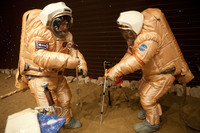 |
 |
| 'Marswalk' training |
Mars500 crew testing Orlan suits |
Gusev crater
The terrain, about 10 m long and 6 m wide, is covered with reddish sand and is built to resemble the surface at Gusev crater.
Gusev, an old lakebed filled with sediments, is one of the most interesting targets for investigation by robotic explorers and humans. NASA’s Spirit rover landed there in 2004 and has shown the crater holds many clues to the planet’s wet history.
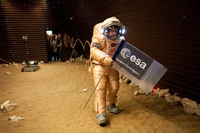 |
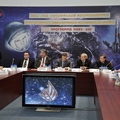 |
| Training for a 'Marswalk' |
Press conference today |
Soyuz-like living for 16 days
The three Marswalkers will live in their 6.3 x 6.17 m lander for 16 days, eating the type of food carried on Russia’s Soyuz spacecraft and enjoying only limited exercise.
The lander will return to orbit on 23 February and dock with the mothership the following day. The hatch between the modules will be opened on 27 February for them to rejoin Romain Charles, Alexey Sitev and Sukhrob Kamolov, who have continued to ‘orbit’ Mars.
Already a successful mission
“The crew is highly motivated and performing very well,” said Jennifer Ngo-Anh, ESA's Mars500 manager.
“The science community is very pleased with the quality of the material but, as this is a long experiment, we have to wait for the results until their ‘arrival’ at Earth.
“At this point, everything looks very good.”
The most difficult but the most interesting part of this psychological study of long flights is still ahead: the crew is now faced with another monotonous ‘interplanetary cruise’ without a highlight like the Mars landing to look forward to.
They will start their eight month journey back home on 1 March, after loading the lander with rubbish and discarding it, as will likely happen during the first real Mars flight.
Personal comment:
“I salute all the explorers of tomorrow and wish them godspeed.”
Thursday, October 28. 2010
via Cyber Badger Research Blog
--
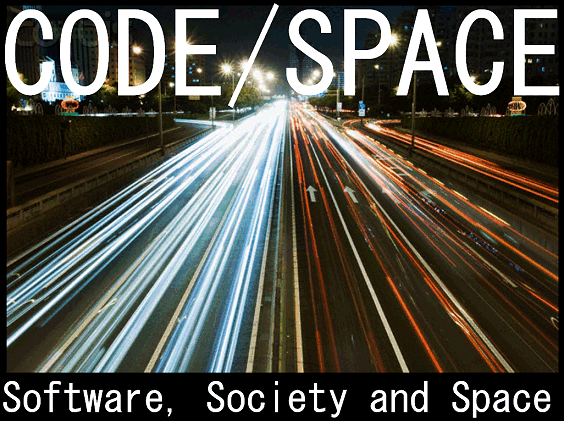
We [ Martin Dodge & Rob Kitchin ] are just checking the page proofs for our book Code/Space that is nearing publication after a somewhat slow production process through much of this year.
The book has an ISBN and is now listed on the MIT Press website, although we are waiting to see what cover design is going to be applied.
Code/Space is structured in four sections and has eleven chapters:
- I Introduction
- 1 Introducing Code/Space
- 2 The Nature of Software
- II The Difference Software Makes
- 3 Remaking Everyday Objects
- 4 The Transduction of Space
- 5 Automated Management
- 6 Software, Empowerment, and Creativity
- III The Transduction of Everyday Spatialities
- 7 Air Travel
- 8 Home
- 9 Consumption
- IV Future Code/Space
- 10 The Promise of Everyware
- 11 A Manifesto for Software Studies
- Brief Glossary of Concepts
- References
- Index
More details on our ongoing research on code/space and various published papers are listed on this webpage.
|



















